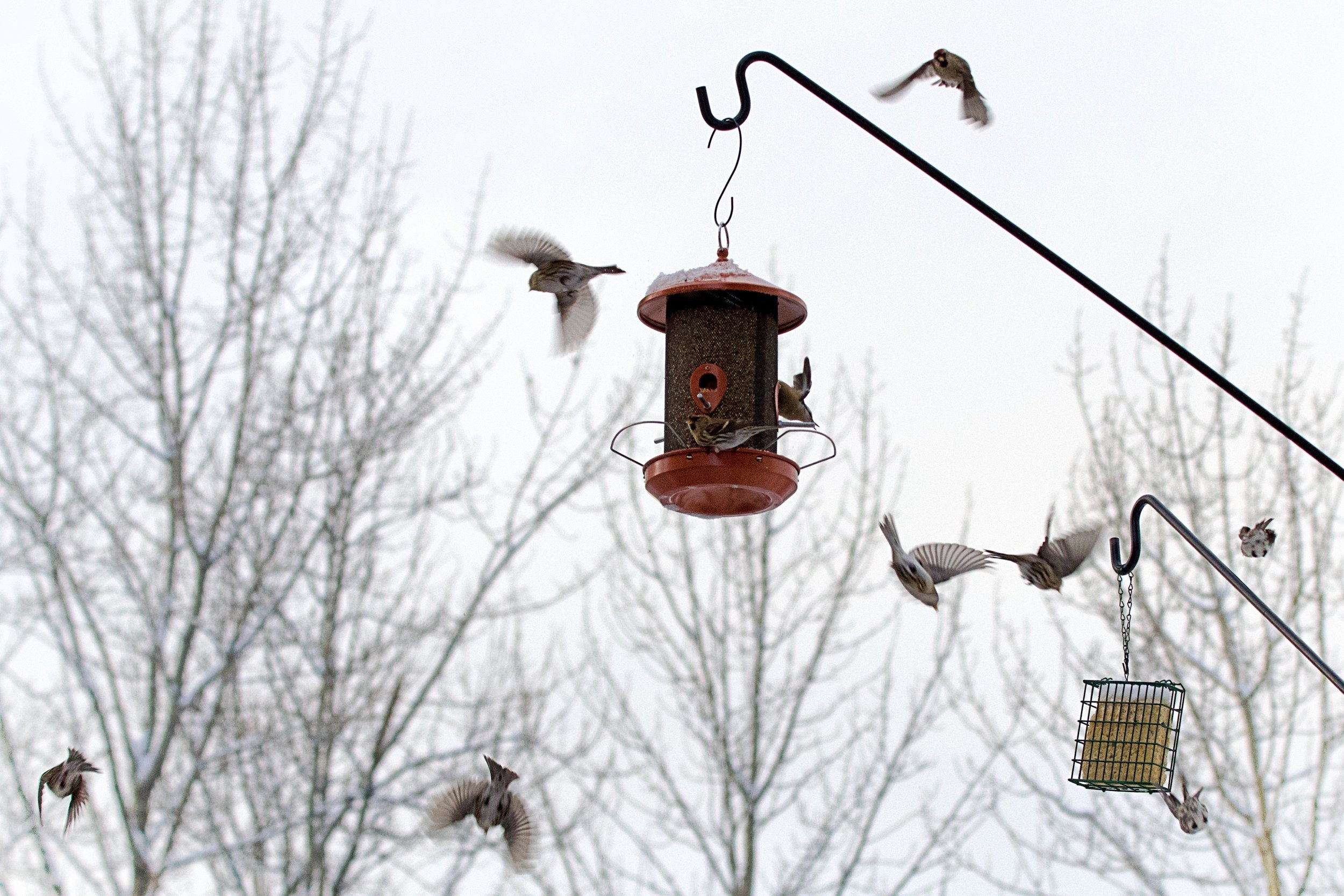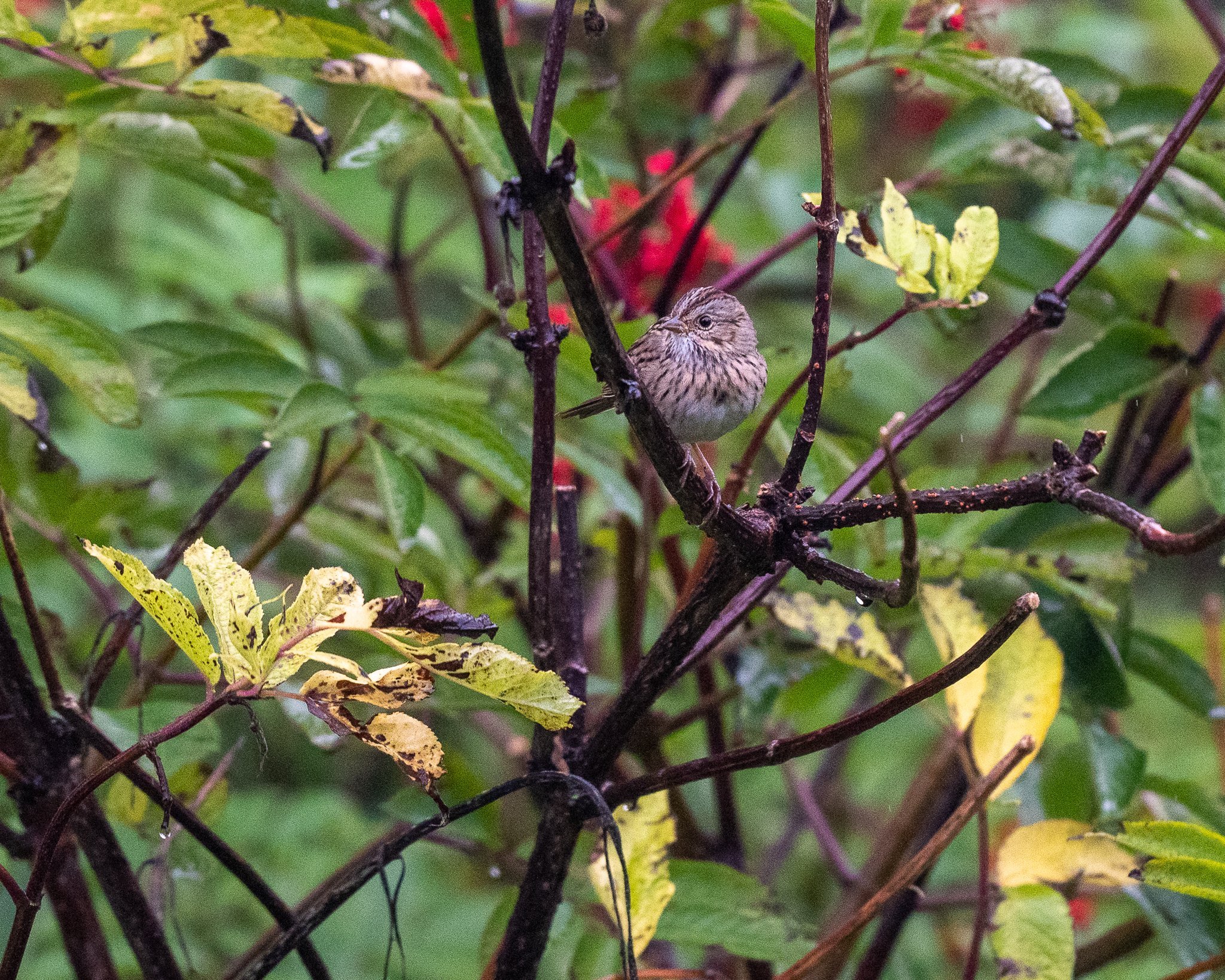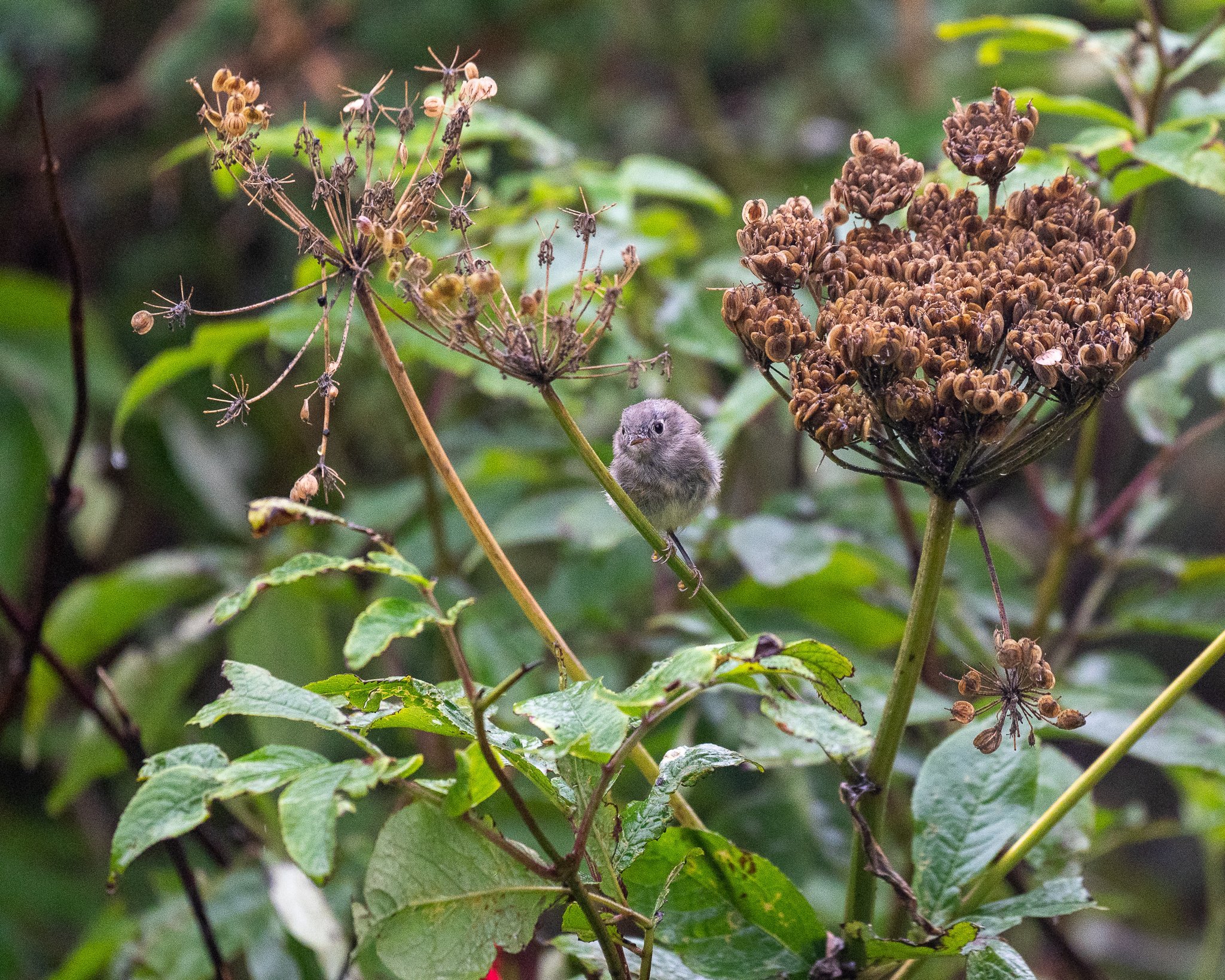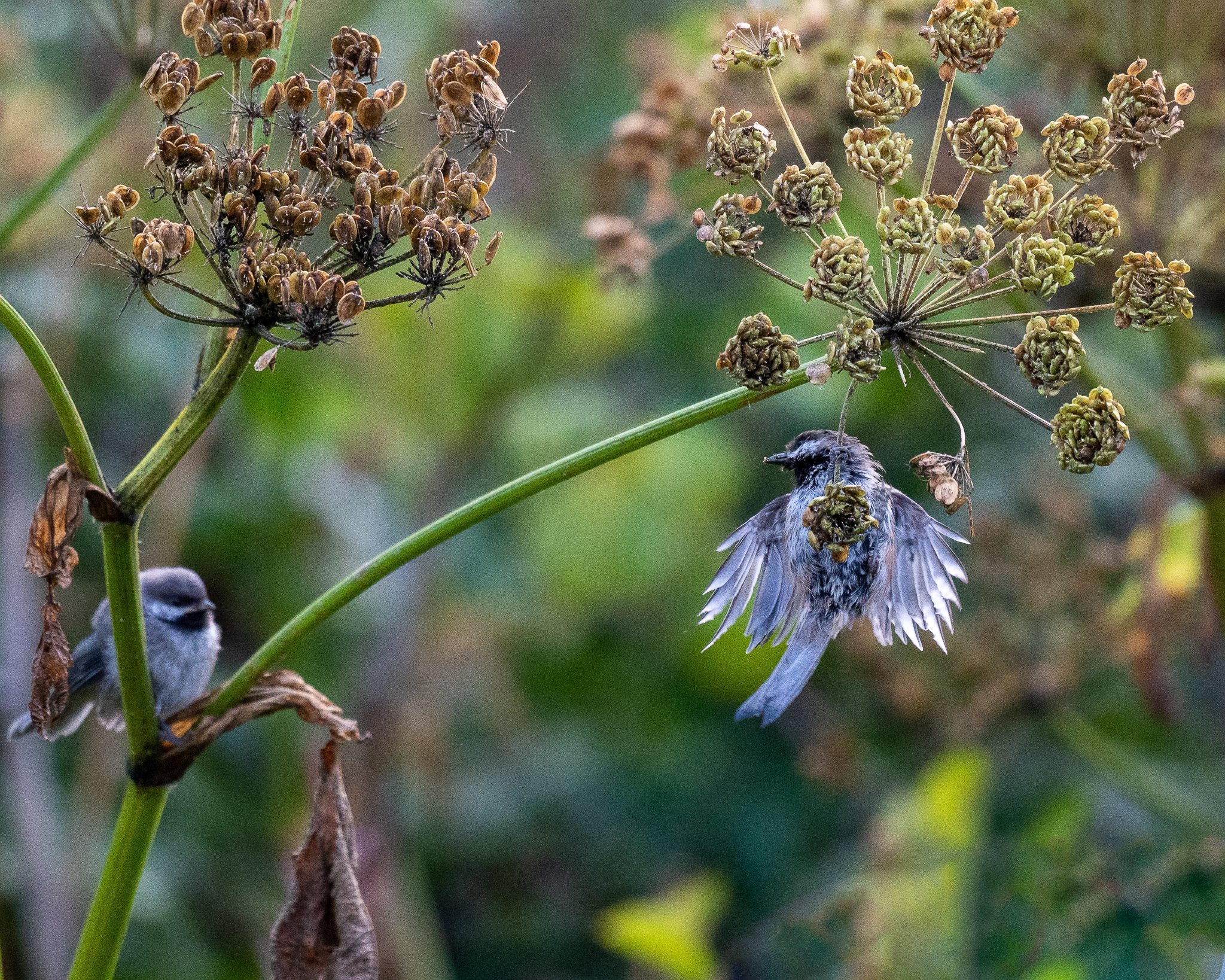Author: J.K. Ullrich, Bird TLC volunteer
Should avian acquaintance be forgot and never brought to mind? Not at Bird TLC! As we turn our calendars to 2024, here are five bird-friendly pledges to round out your New Year’s resolutions.
1) Feed Birds in Winter
More than 100 bird species stay in Alaska for the winter. Many native species cache food in the fall, and survive on these supplies along with natural offerings such as birch and alder seeds. However, our feeding stations can support them during extreme weather events. Before committing to feed birds during the winter, read about the pros and cons of backyard feeding. And remember to be bear aware: feeders should come down in the spring and not go back up until November! If you decide to feed winter birds, set feeders near shrubs and trees that shelter birds from predators. To avoid birds colliding with windows, the National Audubon Society recommends placing feeders and birdbaths within three feet of the nearest window or more than 30 feet from the house. If you’re worried about collisions, there’s more you can do.
2) Prevent Birds Colliding With Windows
Window collisions kill as many as one billion birds in the United States every year. You might have already experienced this tragedy at home. Strikes often occur on large windows or glass doors that reflect trees and sky, or windows across from bird feeders and food plants. Fortunately, there are simple and inexpensive solutions to make problematic windows more bird-safe. Cords or adhesive decals can help birds distinguish the glass. You can even paint a design of your own! Ensure the pattern is clearly visible from ten feet away, allowing birds enough time to recognize the window and change course mid-flight. The American Bird Conservancy offers detailed guidance on reducing window collisions. By redirecting birds from mirrored habitats, you’ll help them thrive in the real ones.
3) Cultivate Native Plants
Birds rely on plants for more than just food. Plants provide shelter from elements and predators; sites and materials for nests; and even vantage points for hunting. Growing native Alaskan plants supports a healthy ecosystem for wildlife. For bird habitat, the Alaska Native Plant Society recommends berries, asters, dragonhead mint, goldenrods, sedge, and myriad trees. Layered landscapes—a mix of ground cover, shrubs, and trees—will attract the greatest diversity of wildlife. Got a brown thumb? Let a patch go wild! Birds love to hide in thickets and untamed grasses. And don’t rush to tidy the garden at summer’s end: drying seed pods and fallen leaves offer valuable forage for birds in colder seasons. Treating your outdoor space as an ecosystem can create a bird sanctuary, and a laboratory for citizen science.
In the photos above, birds take advantage of the native plants in a wild area in a yard. Photo credit: Bird TLC staff.
4) Participate in a Citizen Science Project
Unleash your inner wildlife biologist in 2024! Several participatory science projects—popularly known as citizen science—collect reports from birdwatchers. Researchers use this data to track species’ populations, migrations, and range. If you’re new to these programs, a good place to start is the annual Great Backyard Bird Count, led by the Cornell Lab of Ornithology and National Audubon Society. For four days each February, people across North America observe and count birds in their neighborhoods. This year’s event takes place from February 16-19 2024. For a longer program, consider Project FeederWatch, which surveys birds from November to April on a schedule of your choice. Birdwatchers can also use the eBird platform year-round to tally sightings anywhere in the world.
5) Keep Habitats Hazard-Free
Birds and humans alike revel in Alaska’s magnificent outdoors, but we aren’t always considerate of our winged neighbors. Wherever your adventures lead, respect nesting and conservation sites (imagine how you’d feel if a noisy flock of birds barged into your bedroom)! Also consider the impact of your recreation on wildlife. Anglers should know the dangers that lead tackle and discarded fishing line can pose to waterfowl, including Alaska’s beloved loons. Although the United States banned lead shot for hunting waterfowl in 1991, using it on other game can still harm raptors that eat carrion. Find out more about hunting without lead and resolve to make the switch this year!
6) Support Bird Rehabilitation and Conversation
The staunchest bird lover’s resolutions might waver against the threats of climate change, habitat loss, and pollution. But non-profit wildlife organizations like BirdTLC work to improve stewardship of nature, one bird at a time. Volunteering time or donating funds or resources to your favorite conservation effort can help ensure Alaska’s birds will thrive for many years to come. And remember, if you see an injured, ill, or orphaned wild bird, call us for assistance.
We at BirdTLC wish you a happy and prosperous New Year!





